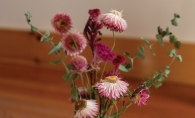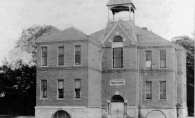
Access to great public parks is one of the many perks that come with living in the Lake Minnetonka area, and Gale Woods Farm, a part of the Three Rivers Park District, is among the best. The 410-acre park is also a working farm and is expansive both in terms of size and programming: From cooking to gardening to arts and crafts, it has classes in just about everything imaginable. Among Gale Woods Farm’s most unique and popular offerings are its fiber arts programs. As an educational farm with a mission to teach the public about agriculture, the fiber arts programs are a perfect fit for Gale Woods—and a lot of fun, as well.
Gale Woods Farm opened in 2003, and the fiber arts programs have served as an integral part of its programming ever since. “We raise sheep for meat and for wool, and we teach people how to cook and eat well using locally grown food,” says supervisor Tim Reese. All of the fiber used in classes and demonstrations comes from the flock of sheep who call the farm home—there are about 24 breeding ewes, and each spring, about 60 lambs are born. The sheep are mostly a mix of Finnish Landrace and Corriedale breeding stock, whose fleece yields fiber especially suited for spinning and felting.
Farm educator Shari Polzin coordinates all aspects of the fiber arts programs, a considerable amount of work. From choosing classes to contacting instructors to teaching felting programs herself, she does it all. “I like all aspects of my job, from teaching small children to senior citizens, to caring for the farm animals, to taking the wool fiber from the sheep to all the processing steps to a final product,” she says. Coordinating the wool processing is a big part of her job and involves a lot of different steps, including shearing, washing and deciding what gets made into yarn or roving. “Visitors can learn all about the wool processing steps at our annual sheep shearing event, which is held the first Saturday in March,” says Polzin. This year’s shearing is right around the corner—mark your calendars for March 3.
Shearing, naturally, is the first stage of the wool-processing cycle. As the snow starts to melt and winter reluctantly gives way to spring, the sheep need to be sheared in order to be ready for the warm months ahead. Although their fleeces provide much-needed heat and protection throughout the chilly months, they can become uncomfortable as temperatures begin to rise. All sheep are sheared in early March, but those with longer fleeces are typically shorn again in the fall.
After shearing, Polzin says, comes “skirting the fleece, [which means] taking out the unwanted pieces of debris and wool.” Then there’s picking the wool and opening up the fibers to allow the debris to fall out, tumbling the fibers, washing and dyeing the wool, then determining if the wool will be sent to a mill in southeastern Minnesota to be processed into yarn, roving or batting—all of which are used for wet felting and spinning.
The yarns at Gale Woods Farm are all hand-dyed by a local artist, Wendy J. Johnson. The varied colors for the dyes are inspired by the environment, particularly around the farm itself. From the calming blue of Whitetail Lake to the bright red of the Gale Woods barn to the cheerful orange of the pumpkins in the pasture, the dyes reflect the natural beauty of the area they come from in addition to being environmentally friendly and nontoxic.
After everything is processed and dyed, it’s ready to be turned into any number of things, like sweaters, mittens or woolly pieces of art. Throughout the month of February, as well as the rest of the year, the farm offers a variety of demonstrations and classes in just about every fiber art imaginable. “We have a variety of classes in felting, spinning, knitting, dyeing and weaving, offered by both professional artists and the Gale Woods staff,” Reese says. Whether or not you’ve previously dabbled in the fiber arts, February is the perfect month to start or keep exploring, no matter your age or experience level.
If you already have some background knowledge in knitting and purling, consider signing up for the Twisted Stitch Wristlet class on February 12, led by knitting designer and local author W.J. Johnson. You’ll leave with a unique new wristlet and the ability to knit another any time you want. For those who are complete beginners, the Fiber Processing 101 class on March 17 is a perfect fit. Open to anyone over the age of 12, the class will teach you how to skirt a fleece, properly wash it and prepare it through teasing, carding and combing. Registration is available online through March 10.
Polzin says, out of all the things to do with wool, wet felting, in which layers of wool roving are combined into one flat piece of fabric, is her favorite. “I personally like the wet felting programs, because you can make a wearable project in two to five hours,” she says. “Wet felting is a skill that’s very easy to learn, and one does not have to be very crafty to end up with a great project.”
Make the trip out to Gale Woods Farm to experience all the fiber arts fun firsthand. Even if DIY-ing isn’t your cup of tea, you can still walk away with something handmade—the farm’s store boasts plenty of accessories and artwork done by local fiber artists. If you end up bitten by the fiber arts bug, the store also sells plenty of yarn and felting supplies so you can make your own wool-based project at home.
To register for classes, visit the website here.









